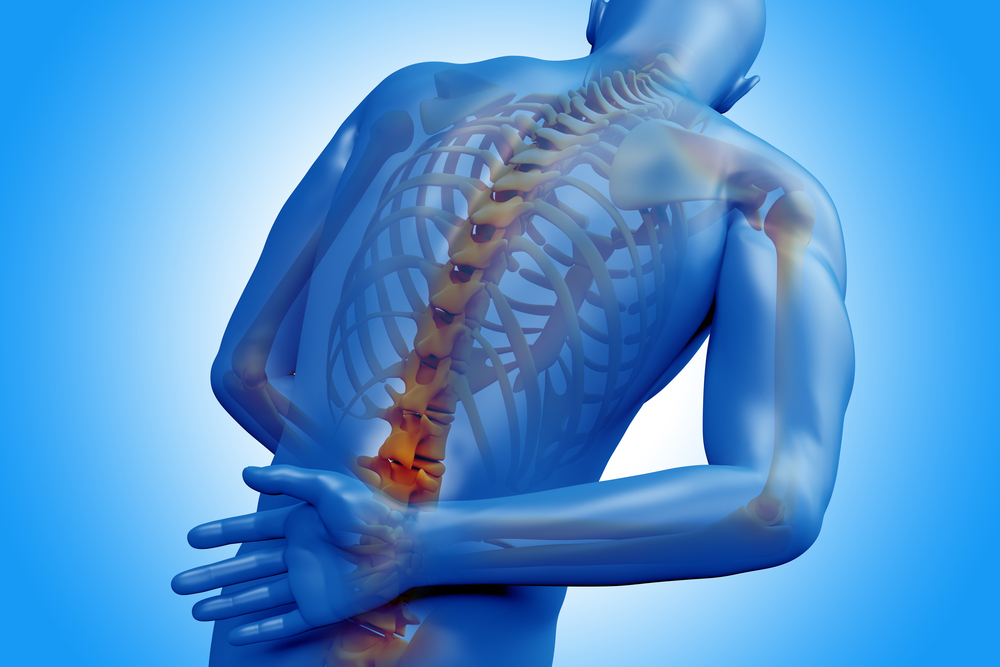Genetic Marker HLA-B27 Correlates With Ankylosing Spondylitis Onset but Not Disease Burden, Study Shows
Written by |

The presence of a specific genetic marker called HLA-B27 in Caucasian ankylosing spondylitis patients is related to earlier disease onset and higher disease prevalence among family members, a study has found.
However, according to the research, being HLAB27-positive is not related to a higher burden of disease or uveitis (inflammation of the eye).
The study, “Influence of HLA-B27 on the Ankylosing Spondylitis phenotype: results from the REGISPONSER database,” was published in Arthritis Research & Therapy.
Axial spondyloarthritis (AxSpA) refers to a group of rheumatoid diseases characterized by the involvement of the axial skeleton, the part of the skeleton that consists of the bones of the head and torso.
Ankylosing spondylitis (AS) is the most common disease in this group of disorders and clinically presents with inflammatory back pain — but can also involve other sites.
The prevalence of AS is about 0.2-0.3%, depending on the geographical distribution of human leukocyte antigen B27 (HLA-B27), the main genetic factor related to disease development.
HLA-B27, a protein present on the surface of white blood cells, is known to contribute to immune system dysfunction. The presence of HLA-B27 is associated with certain autoimmune and immune-mediated diseases, including AS and juvenile rheumatoid arthritis. However, nearly 10-20% of patients with defined AS do not carry HLA-B27.
Prior studies have suggested a relationship between the presence of HLA-B27 and axial manifestations. But only a few studies have evaluated the role of HLA-B27 in defined AS patients, and many of them have reported conflicting results.
Researchers in this study assessed the influence of HLA-B27 on the clinical presentation of AS patients. The team reviewed data from the Spanish REGISPONSER database, which includes more than 1,000 AS patients.
Data from 1,235 patients (74.8% male) were analyzed. Among them, 1,029 (83%) were HLA-B27-positive.
Researchers evaluated a number of different parameters including demographics, clinical presentation, disease activity, and radiographic data with regard to HLA-B27 status. A statistical analysis was conducted to determine which variables were independently related to HLA-B27.
HLA-B27-positive patients showed higher family aggregation. This means that HLA-B27-positive patients are more likely to have family members who also have AS than those who are HLA-B27-negative.
HLA-B27-positive patients also had an earlier disease onset than those who are HLA-B27 negative.
“Disease duration was significantly higher in HLA-B27-positive AS patients than the other group. Given that disease duration is one of the main factors related to structural damage, the data reported here do not support a major role of HLA-B27 in the extension of the structural damage in defined AS patients,” the researchers noted.
Compared with HLA-B27-positive patients, HLA-B27-negative patients presented with statistically higher scores of disease activity as well as higher prevalence of arthritis, dactylitis (inflammation of a digit), and extra-articular manifestations — such as psoriasis and inflammatory bowel disease (IBD) — but not uveitis.
Using multivariate statistical analysis, which looks at the observation and analysis of more than one outcome variable, researchers discovered that family history, younger age at diagnosis, presence of peripheral arthritis, dactylitis, psoriasis, and IBD were the main variables independently related to the presence or absence of HLA-B27.
“This study confirms the previously reported association in AS patients between HLA-B27 and an earlier disease onset and greater family aggregation,” the researchers wrote.
“However, and interestingly, we do not support an association between HLA-B27 and the extent of axial structural damage, or a higher clinical burden of the disease,” they added. “On the other hand, the absence of HLA-B27 is related, in AS patients, to a higher frequency of peripheral arthritis, dactylitis, and extra-articular manifestations.”





